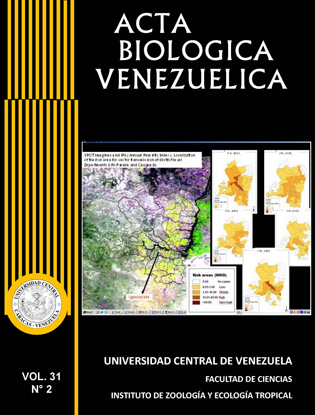LANDSCAPE METRICS AS AN ANALYTICAL TOOL FOR THE PROSPECTION OF MALARIA IN THE PARIA PENINSULA, SUCRE STATE, VENEZUELA
Palabras clave:
Landscape metrics, malaria, landscape ecology, epidemiological surveillanceResumen
A hybrid classified Landsat 7TM+ image was used to perform a statistical analysis to separate regions with different landscape patterns. Additionally, metrics corresponding to dominance, and contagious and fractal dimensions were calculated and used as indicators to measure the spatial difference of malaria incidence, and furthermore to establish a characteristic spatial pattern of widespread malaria in the Paria Peninsula, Sucre state, Venezuela. Field evidence collected reinforced the hypothesis that recent changes produced on the landscape pattern favors survival rate of mosquitoes (Anopheles aquasalis), the malaria vector in this region. They resulted in an increased probability of effective encounters of an infected mosquito with a human host. Consequently, malaria prevalence increased in the region. Based on this evidence, epidemiological surveillance and control policies should consider these events and take measures to reduce immature population stages of the mosquito vector, thus contributing to maintain the epidemic effect of malaria transmission on human communities at a low level, and reducing the expression of the so called malaria local foci. Similarly, such practices reinforce the idea that a more effective epidemiologic control must result from incorporating the specific ecological features of each locality into the policies design, and hence control effectiveness may be increased in comparison with a generalized control based only on the reduction of adult mosquito populations in a critical malaria focus or by means of a wide indiscriminate use of insecticides.


